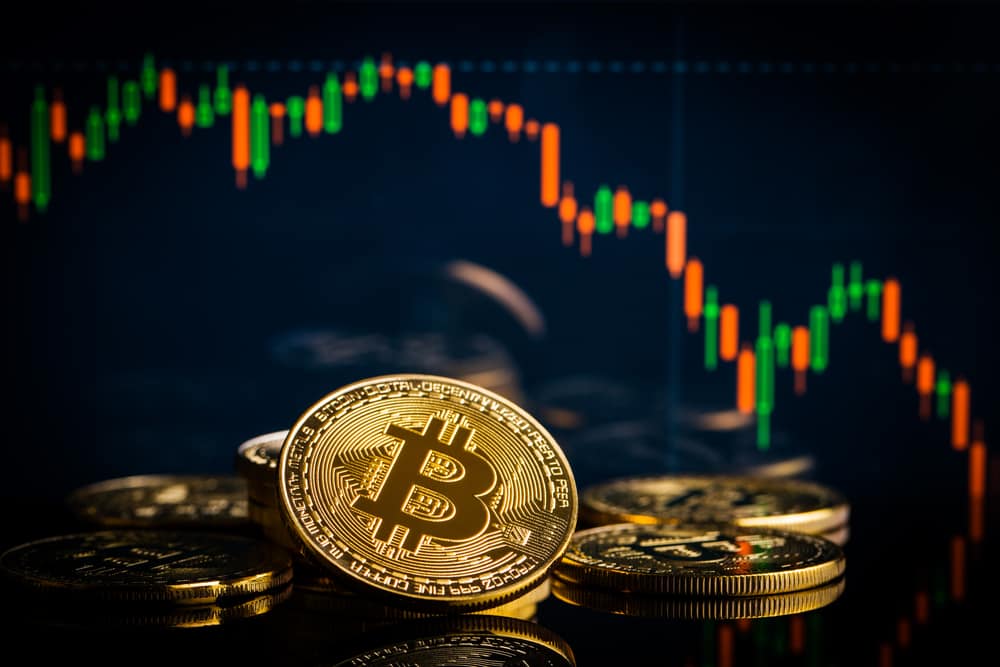Bitcoin Tumbles along with Wall Street

Author: Jeffrey Taylor
Last Updated: 17 June 2020
In tandem with Wall Street, Bitcoin prices tumbled late last week. Bitcoin prices fell to a price close to $9,100, a drop of almost 6.4 percent, rekindling the often-debated issue of Bitcoin’s use as a store of value. At the same time that Bitcoin dropped, the S&P 500 index of larger U.S. stocks also lost 5.7 percent.

Dour Assessment of the U.S. Economy
The slide in stocks and Bitcoin came after the U.S. Federal Reserve gave an unexpected gloomy assessment of the outlook for the economy. Investors took this to mean that an increase in new COVID-19 cases may have a negative impact on economic recovery. Despite the 30 percent increase in the value of Bitcoin from the first of the year, investors also may have sold the cryptocurrency.
Sasha Goldberg, of Efficient Frontier Markets, suggested the overall negative sentiment in the stock market might have affected the price of Bitcoin.
Although a correction was expected, the drop in the price of Bitcoin was nowhere close to the 39 percent drop in early March. At that time, investors in stocks, bonds, and crypto realized how much of a toll the Coronavirus was likely to take on the economy.
The Fall Continues
In early week trading, Bitcoin declined a further 2.7 percent with the price hitting a three-week low of $8910. Futures tied to the Standard & Poor 500 were also down by 2.5 percent. Prices in Europe and Asia were also down over fears of a second wave of COVID-19 in China.
The Drop in Bitcoin Prices Could be Short-Lived
Data from options markets seems to suggest the drop in Bitcoin prices could be short-lived. Although Bitcoin and equities are both tracking lower, Bitcoin’s put-call volume ratio is now at 1.79, a three month high. According to research firm, Skew, the put-call ratio is standing at the highest value since the March market crash.
The put-call ratio is an indicator of bearish bets (put options trading) to Bullish bets (call options). Trading volume in put options is considerably higher than call options. Investopedia suggests a put to call ration anywhere above 1.0 is seen as an indicator of a selloff. A put to call ratio below 1.0 is an opportunity to buy. However, there is a caveat. When the ratio enters extreme bearishness territory, it is thought the market is ready for a reversal higher. Conversely, when the ratio is too low, the market may be close to topping out.
A reading above 1.7 may be too high for Bitcoin. The ratio has only breached 1.7 twice, on both occasions, prices tanked on the same day or the following trading day. On March 12, the put-call volume ratio breached 1.89; the day crypto fell by close to 40 percent. The following day saw Bitcoin priced at just under $3,900. A similar scenario was witnessed in December. The put-call ratio rose to almost 2.0. The price of Bitcoin dropped to $6,500.
Some might see the latest put-call ratio of 1.79 as advance warning of an impending bear trap.
The head of digital assets at Swissquote Bank, Mr. Chris Thomas, said the divergence between put-call volume and decreasing put-call interest seems to imply that many positions have been closed out on profit-taking. To validate this argument, one only has to look at the decline from 9.4 to 6.3 percent in the put-call skew. As the put-call skew is a measure of put prices to call prices, the decline represents a recovery in demand.
Over the next few weeks, investors will be keeping a sharp eye on any COVID-19 related sell-off of equities. An increase in cases may very well cause negativity in the market, which can pull Bitcoin prices lower as well.
BWCEvent aspires to share balanced and credible details on cryptocurrency, finance, trading, and stocks. Yet, we refrain from giving financial suggestions, urging users to engage in personal research and meticulous verification.


